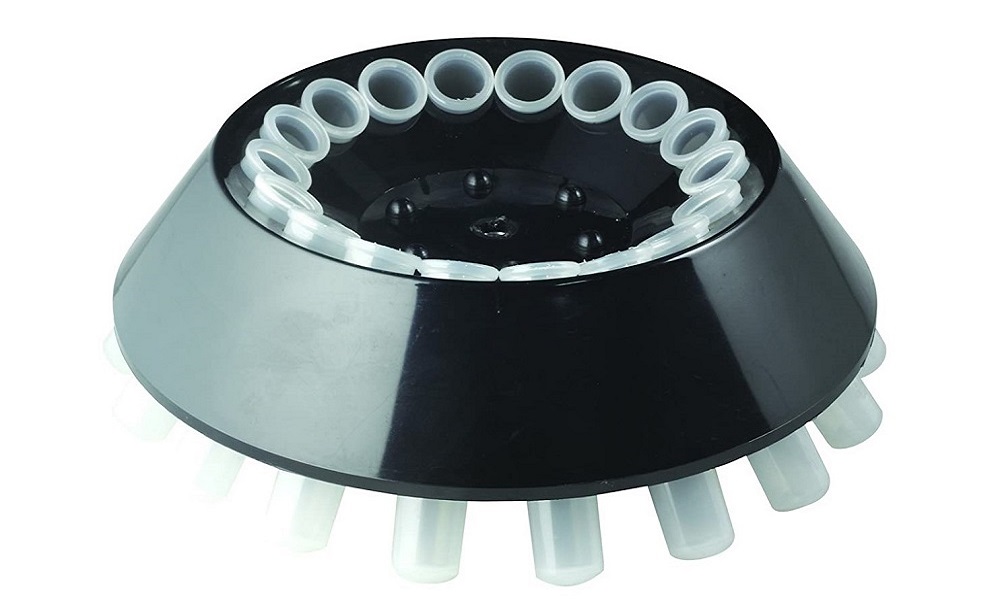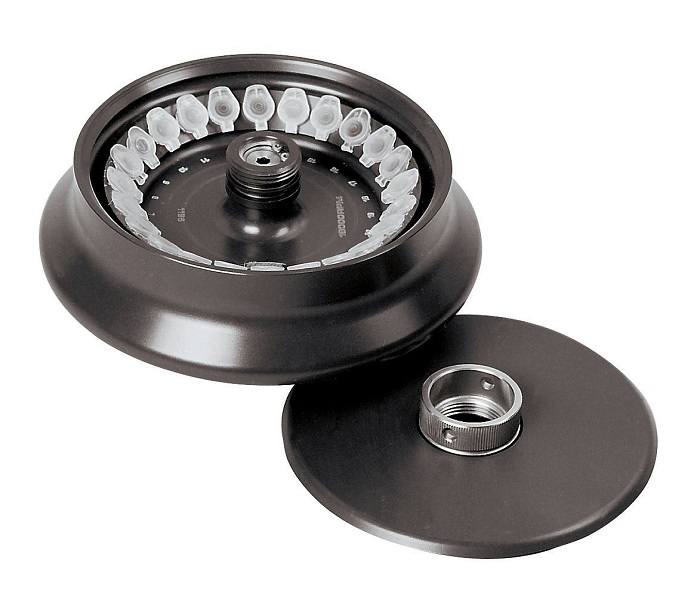So you want to know what fixed angle rotors are, and how they work! well you’re in the right place. In this article, Linquip will tell you all about fixed angle rotors, their function, and even the industry that uses the benefits of this kind of rotors. Since they play an important part in our daily life, from the milk we drink to our health and well-being, it’s important to know them properly. Keep reading to expand your knowledge on the subject.
What is a fixed angle rotor?
Fixed angle rotors are one of the types of centrifuge rotors. There are actually two kinds of these rotors: swing bucket rotors and fixed angle rotors. As the name suggests, a fixed angle contains bores that are at a fixed angle of 45 degrees. The most compact pellet of this will be formed at that 45-degree angle. Rotors with less than 45 degrees will have more diffuse pellet areas.
What do fixed-angle rotors do?
Fixed angle rotors are usually used for pelleting applications such as pelleting yeast, bacteria and different mammalian cells. These rotors are also used for isopycnic separations of macromolecules like nucleic acids. With the rotation of fixed angle rotors, reorientation of the solution in the tubes begin. The centripetal force’s angle is where more dense materials will separate. The sedimentation in a fixed angle happens on the side of the tubes.
When do I need a fixed-angle rotor?
The great thing about rotors is that they can do what normally takes hours or day under the normal gravity of 1g in less than a few minutes since they prove a force of 10000 g. This allows scientists to easily separate organelles, tissues, cells, and macromolecules.
There are several situations that a fixed angle rotor would be helpful in. Like when the number of vessels that are being used is low, or when compact pellets are needed. Another situation would be when high G-forces are applied.
In the fixed angle rotor, pellets are in the middle of the tube bottom, this makes them perfect for when very low buffer volumes should be used to resolve the pellet and low concentrations are expected to have a high sample concentration. You should pellet to end up at the outer bottom wall of the tube when pelleting since it’s the best spot that makes collecting the pellet easy and effortless.
Advantages of using a fixed angle rotor
One of the great advantages of fixed angle rotors is that unlike swing bucket rotors, they don’t have any moving parts. As a result of not having any moving parts, fixed-angle rotors have lower metal stress that the other type of centrifugal rotors. Fixed angle rotors have shorter centrifugation times and also higher possible g-forces. The only disadvantage of fixed angle rotors is that the vessel capacity they provide is limited. Fixed angle rotors have efficient and simple tube spacing and can hold a greater quantity of tubes than swinging bucket centrifugal rotors and are great for high-throughput applications.
Another advantage of the fixed angle is their ability to withstand higher gravitational forces since they have metal alloy material and as a result, they have a rigid design.
What are the things to consider while choosing your centrifugal rotor?
There are certain factors to consider when you want to buy a rotor, like the tube volume, the ideal spin speed, and also the quantity per speed. While trying to determine the right one, consider the lab’s throughput. Since fixed angle rotors can carry a great number of tubes at once, they can work magic for high-volume application. The centrifugal spin speed is also important and fixed angle rotors can withstand much higher speeds than the other competitor. To choose the rotor, you need to know these numbers and chose wisely to pick the right rotor that brings you your ideal results.
Differences between fixed angle rotors and swing-out rotors
Swing out rotors, also known as the rotor with a variable angel or bucket rotor, has tubes located in the buckets. These tube holders are not rigidly attached and fixed to the rotor with the same angle like fixed angle rotors. As already mentioned, fixed angle rotors work at a 45 degree, but swing out rotors work in a way that allows the buckets to spin horizontally. The working angle in these two types of the rotor is the main difference between them. Some other differences are also there which mentioned briefly earlier, like the force that affects the centrifuged sample, the volume of tubes it can handle, etc. Another advantage of the fixed angle is that they are able to hold and handle a greater quantity of tubes.
What industries use fixed angle rotors?
The centrifugation with its wonderful power is capable of separating different particles in solutions such as micro-molecules and macro-molecules. Centrifugation is used in our everyday life in different industries for different purposes such as wastewater management, food purity, biological analysis in forensic investigations and pharmaceutical development.
Food purity such as removing fat from milk provides food diversity for our tables. Biological analysis in forensic investigations helps in medical fields for example in separating and studying blood and urine. Characterizing macromolecules in pharmaceutical development also helps our well-being when needed. And in wastewater management, it helps separating heavy metals and sludge from the water.
Now that you read about fixed angle rotors and how they work, how about sharing your thoughts on the subject? Use the comment section below and let us know all your questions and concerns. If you’re still not sure if fixed angle centrifugal rotor is the right choice for you, you can ask our experts for advice. And if you have any specific question and need an expert to guide you, feel free to sign up on our website and one of the most skilled experts on Linquip will help you out.




